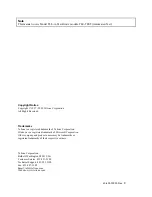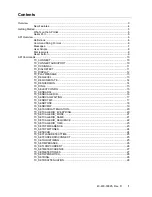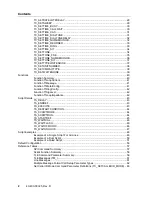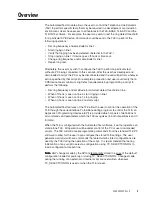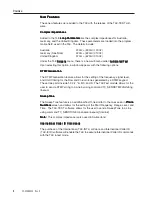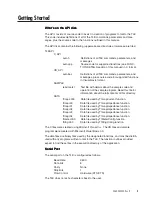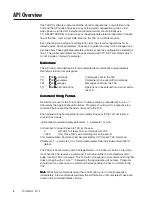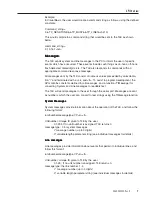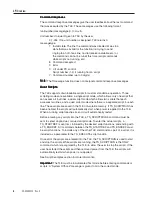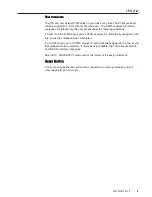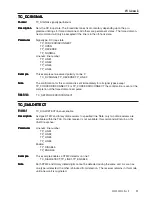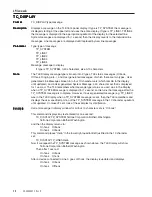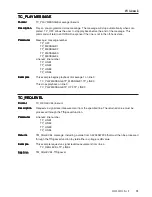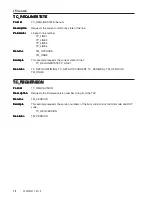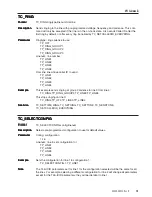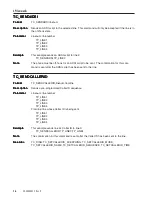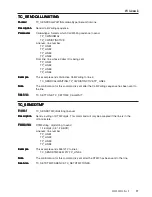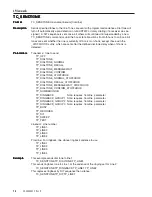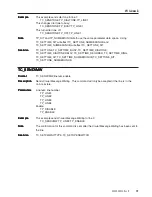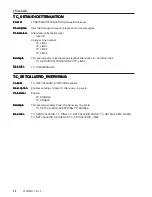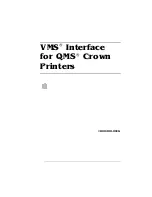
API Overview
6
40-400-00025, Rev. D
API Overview
The TLE PC software program edits the stored configurations (non-volatile) in the
TLE and the API edits and uses a copy of the stored configuration(s) that is lost
when power is turned off. External and internal scripts should initially use
TC_SELECTCONFIG to load a copy of the appropriate stored configuration for each
line of the TLE. User scripts ARE saved in the TLE non-volatile memory.
Each line may use a separate configuration from the stored configurations for its
default values. Some parameters, however, are global and may not be changed on a
per-line basis. These global parameters will always use the configuration selected for
line 1. The global parameters are those associated with TC_SET commands which
do not include a “linenum” parameter.
Definitions
Definitions
Definitions
Definitions
Definitions
The API will contain definitions for all automated test commands and parameters.
Definitions fall into four categories:
TC_
T
T
T
T
TLE C
C
C
C
Commands
Commands sent to the TLE.
TP_
T
T
T
T
TLE P
P
P
P
Parameters
Parameters to be sent with commands.
TM_
T
T
T
T
TLE M
M
M
M
Messages
Messages sent from the TLE.
TS_
T
T
T
T
TLE S
S
S
S
Script operations
Operations to be entered into a script within
the TLE.
Command String Format.
Command String Format.
Command String Format.
Command String Format.
Command String Format.
All commands sent to the TLE consist of numeric values, preceeded by a colon “:”
followed by the appropriate unit number. Programs should wait for a response to a
command before sending the next command to the TLE.
Each programming and operational command string sent to the TLE will follow a
structure as follows:
:unitnumber,commandnumber,parameter_1…parameter_n<cr/lf>
Unitnumber: Unique ID given to TLE by the user.
0
All TLE’s will respond to commands with ID 0
1-255
Only those TLE’s with matching ID’s will respond
Commandnumber: Command number provided by API for each TLE command.
Parameter_1…parameter_n: Command parameters. See individual commands for
details.
The TLE will work correctly with Carriage Return or Line Feed or both as a termina-
tor. When the TLE receives a command, it will return either a Command Acknowl-
edge, Invalid or Error message. The TLE will not respond to any command string that
does not begin with a colon “:”, followed by the appropriate unit number. Programs
should wait for a response to a command before sending the next command to the
TLE.
Note
Note
Note
Note
Note: While most commands return the confirmation, error or invalid response
immediately, a few commands will delay the confirmation until completed. These are
noted in the command details section.


